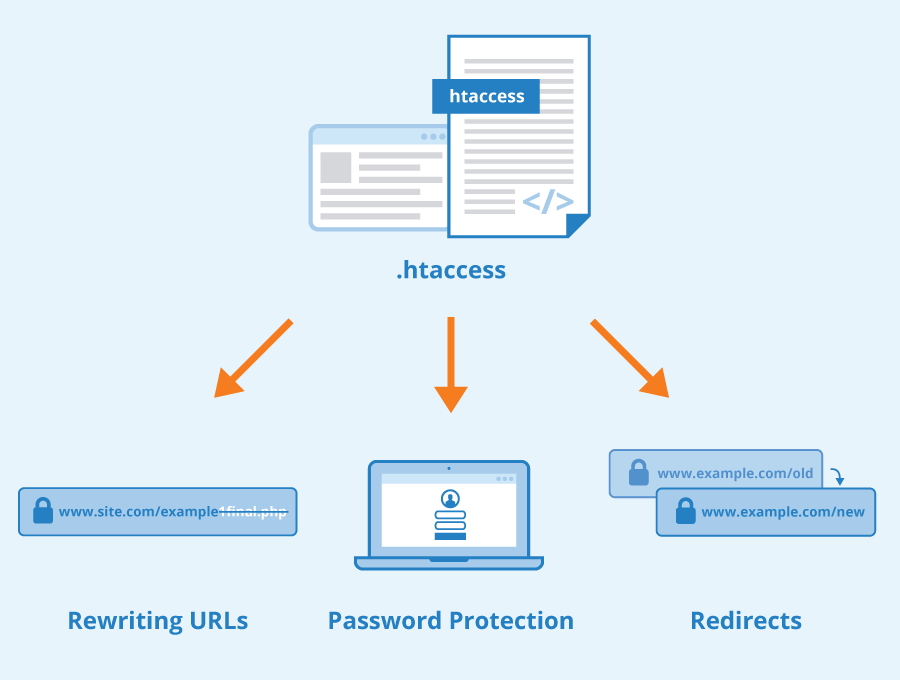Understanding .htaccess: A Powerful Tool for Webmasters
If you've ever delved into the intricacies of web hosting and server configurations, you might have come across the term ".htaccess" at some point. It's a powerful and versatile configuration file used primarily by web servers that support Apache. In this blog post, we'll explore what .htaccess is, how it works, and provide some practical examples of its usage.
What is .htaccess?
The .htaccess file is a configuration file used by the Apache web server to apply specific settings and directives to directories, subdirectories, and individual files. It stands for "Hypertext Access" and allows webmasters to control various aspects of their website's functionality, security, and performance without directly editing the server configuration files.
How to Use .htaccess
To create or edit an .htaccess file, you'll need access to your website's server files. Most commonly, you can use FTP (File Transfer Protocol) or a file manager provided by your web hosting control panel to access and modify .htaccess files.
Let's look at some examples of how you can use .htaccess to achieve different objectives:
1. Redirects
One of the most common uses of .htaccess is to set up redirects. For instance, if you've changed the URL structure of your website or moved a page to a new location, you can use a redirect to ensure that visitors are automatically directed to the correct page.
# Redirect from old-page.html to new-page.html
Redirect 301 /old-page.html /new-page.html
In this example, Redirect 301 indicates a permanent redirect from "/old-page.html" to "/new-page.html".
2. Password Protection
You can restrict access to certain directories on your website using .htaccess and basic authentication. This is useful for creating private areas or protecting sensitive files.
# Password protect the "secure" directory
AuthType Basic
AuthName "Restricted Area"
AuthUserFile /path/to/.htpasswd
Require valid-user
Here, /path/to/.htpasswd should point to a file containing usernames and encrypted passwords.
3. URL Rewriting
URL rewriting allows you to create user-friendly URLs or rewrite URLs for SEO purposes. For example, you can convert dynamic URLs with query parameters into cleaner, more readable URLs.
# Rewrite URL from /product.php?id=123 to /products/123
RewriteEngine On
RewriteCond %{REQUEST_FILENAME} !-f
RewriteCond %{REQUEST_FILENAME} !-d
RewriteRule ^products/([^/]+)$ /product.php?id=$1 [QSA,L]
This rule rewrites URLs like "/products/123" internally to "/product.php?id=123".
4. Blocking IP Addresses
You can block specific IP addresses or ranges from accessing your website using .htaccess.
# Block a single IP address
Deny from 192.168.1.100
5. MIME Types and Headers
You can configure MIME types and set custom HTTP headers using .htaccess.
# Set MIME type for SVG files
AddType image/svg+xml .svg
# Set custom header
Header set X-Frame-Options "SAMEORIGIN"
These directives ensure that SVG files are served with the correct MIME type and set the X-Frame-Options header to mitigate clickjacking attacks.
Conclusion
The .htaccess file is a powerful tool that empowers webmasters to control various aspects of their websites' functionality and security. However, it's important to use it judiciously and with caution, as incorrect configurations can lead to unexpected issues. Always make sure to back up your .htaccess file before making changes and test thoroughly to ensure everything works as intended.

Comments
Post a Comment